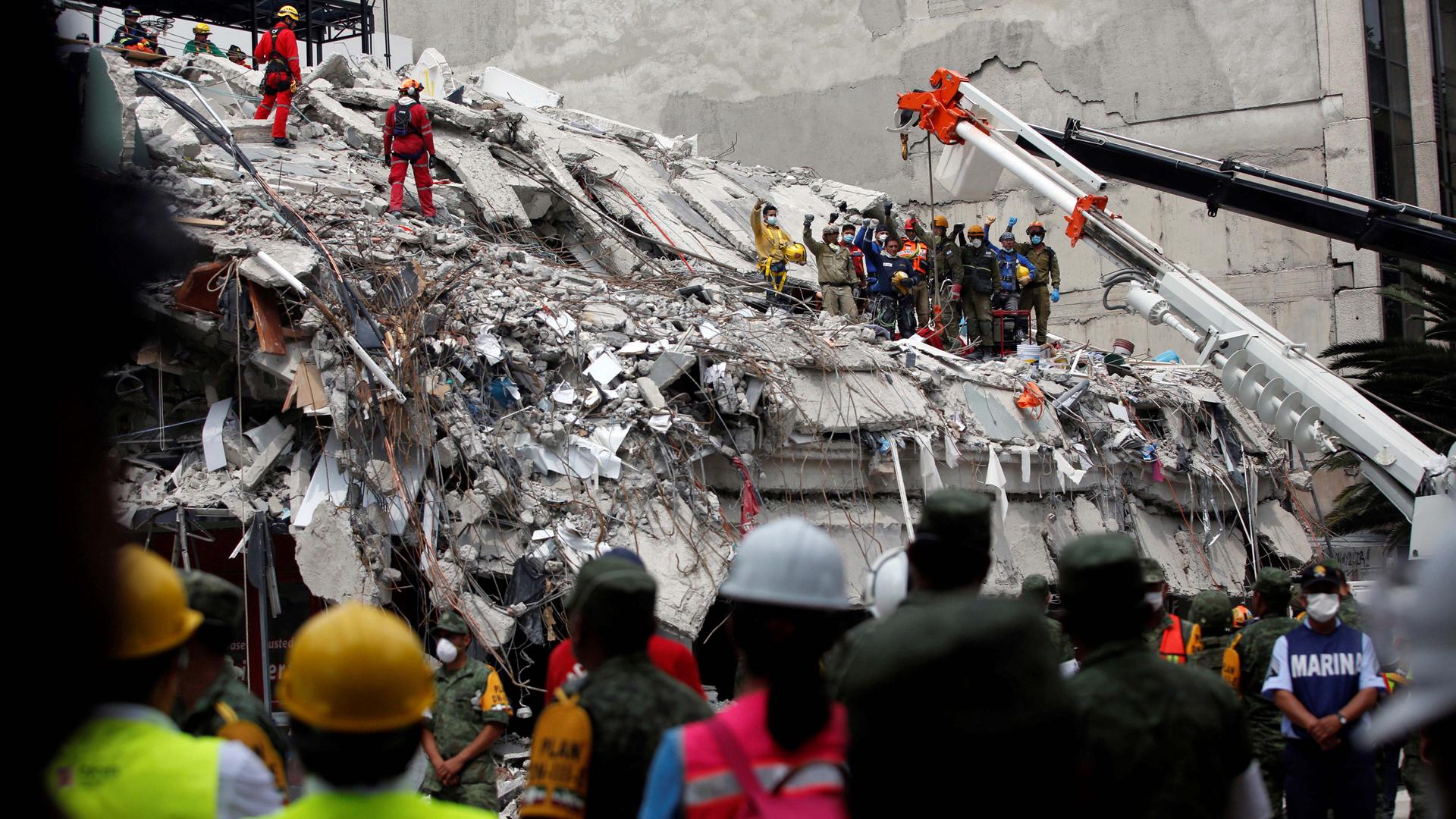Hundreds of Mexico City buildings may now be uninhabitable
Members of Israeli and Mexican rescue teams gesture for a minute of silence after retrieving a dead body from a collapsed building after an earthquake in Mexico City, Mexico, on Sept. 21, 2017.
Jessica Cruz slept in a crowded Mexico City gym this week, flanked by exercise equipment, a baby carriage, a large pile of stuffed animals and a small bag of diapers for her baby boy.
The workout room, laden with blue foam mats, was far from comfortable. But for Cruz, it was way better than returning to her fourth-floor apartment, just a 10-minute walk away, in Cuauhtémoc — one of the city’s districts hit the hardest by Tuesday’s devastating earthquake.
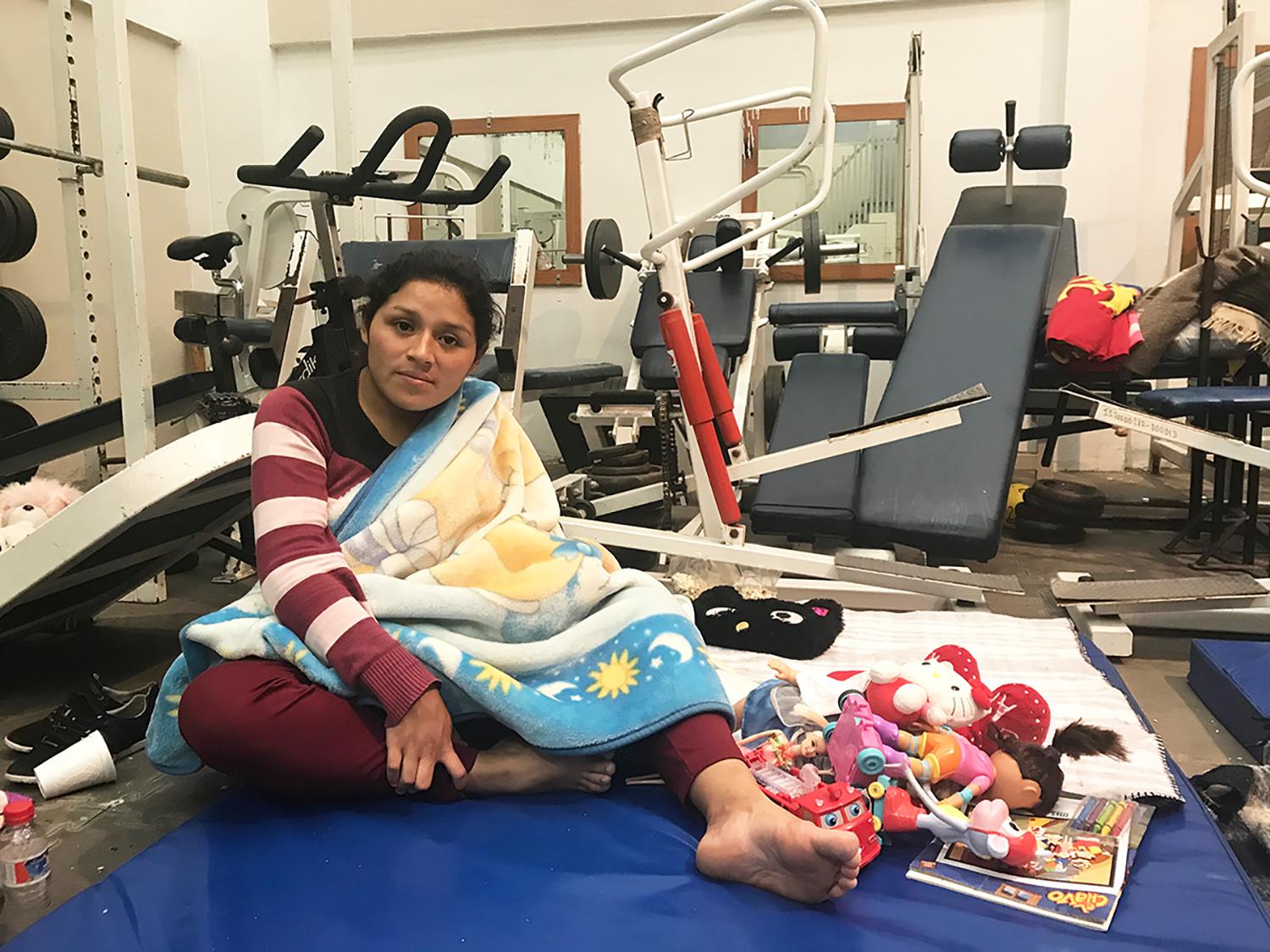
“When you go up the steps there, it feels like you’re walking on Jell-O,” Cruz said, adding that her kitchen roof also cracked this week. She and her family tried to sleep in the apartment following the quake but the thought of aftershocks made it too stressful. So on Wednesday they headed to the gym at the local public sports center.
“It’s best to stay here until someone tells us it’s safe to go back home,” she said.
An estimated 40 buildings collapsed in Mexico City in Tuesday’s earthquake, the country’s deadliest in 30 years, with the official death toll climbing close to 300. Dozens of buildings have been evacuated for fears they could succumb to aftershocks. The total number of evacuees was not immediately available.
Residents are afraid of aftershocks, and there have been numerous tremors since Tuesday.
Early Saturday, an earthquake the US Geological Survey measured at magnitude 6.1 struck in Oaxaca state, setting off seismic alarms in Mexico City that sent residents into the streets.
It caused some harm in Oaxaca, including the collapse of a bridge and buildings that had already been damaged in another earthquake earlier this month and killing two people, according to La Jornada newspaper.
In Mexico City, buildings swayed but the city's mayor said no new damage was reported after Saturday morning's temblor.
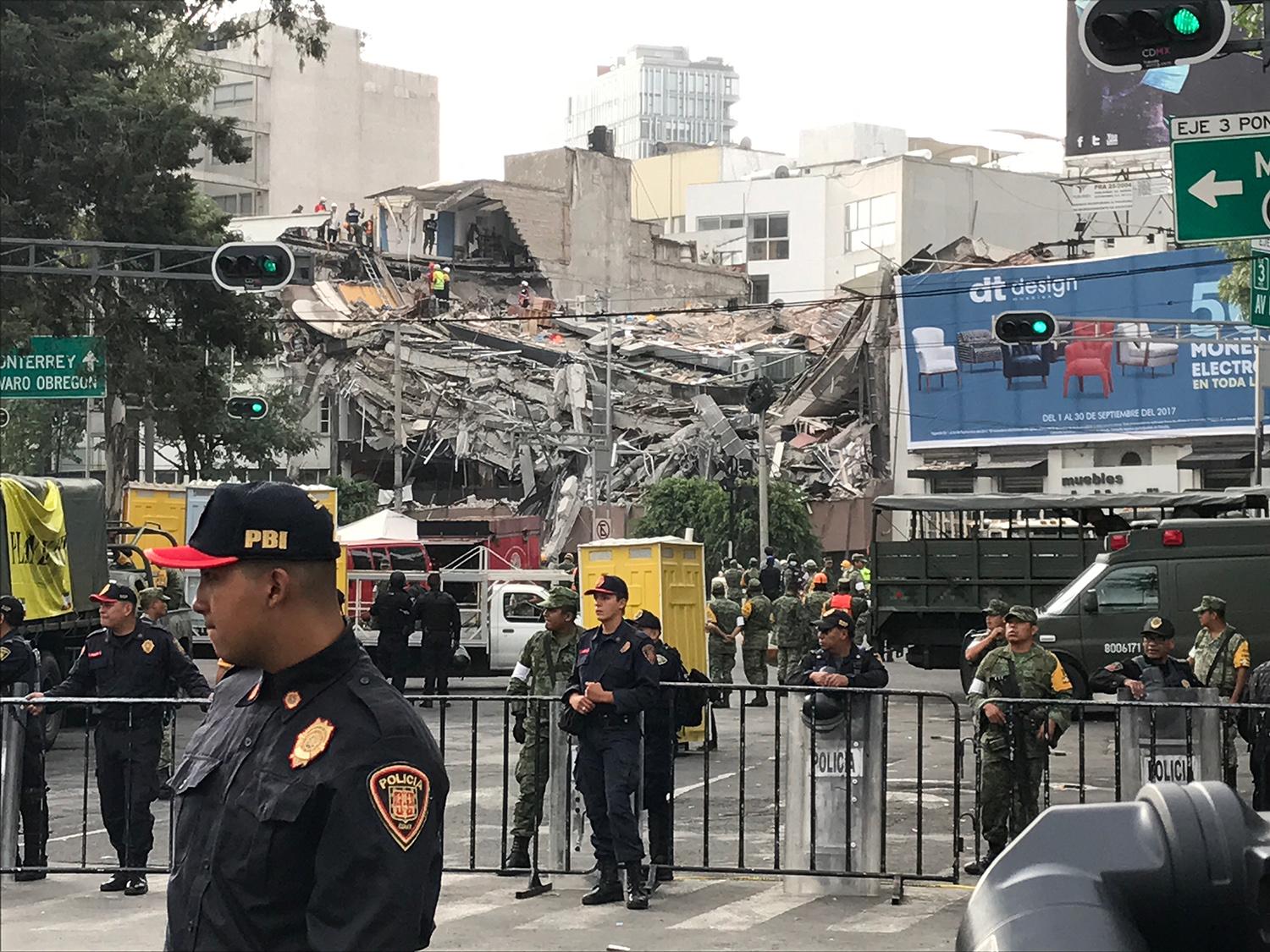
In parts of this megacity, shops and restaurants have opened and businesses have begun to operate again. But throughout the capital, soldiers and volunteer crews still work frantically around toppled buildings to find survivors. Volunteers can also be seen collecting food to send to other areas of central Mexico that were badly hit by the quake.
For the moment, evacuees in the capital city are staying with relatives, at charity shelters or at one of the 42 shelters set up by the Mexico City government. But if their homes have to be knocked down in the coming days due to structural damage, those residents will need greater, longer-term support.
“This is just the start of the nightmare,” says Teodoro Gutiérrez, a social development official with the Cuauhtémoc district.

“The solidarity of Mexico City residents has been abundant, and we are very grateful,” Gutiérrez said. “But we need this to last for several months.”
He estimated it could take six or seven months to resettle displaced victims.
Gutiérrez explained that Mexico City’s government will have to help earthquake victims get food, housing and jobs until they can get back on their feet. And that will become harder to do if more homes are knocked down.
The official said engineers are inspecting 160 buildings in his district of Cuauhtémoc alone, to see whether they should be repaired or demolished. The city has 16 districts in all, and destruction occurred in many areas of the city.
“We have plenty of food here now,” Gutiérrez said. “But we need to prepare for the following weeks, because this problem will not be solved in a few days.”
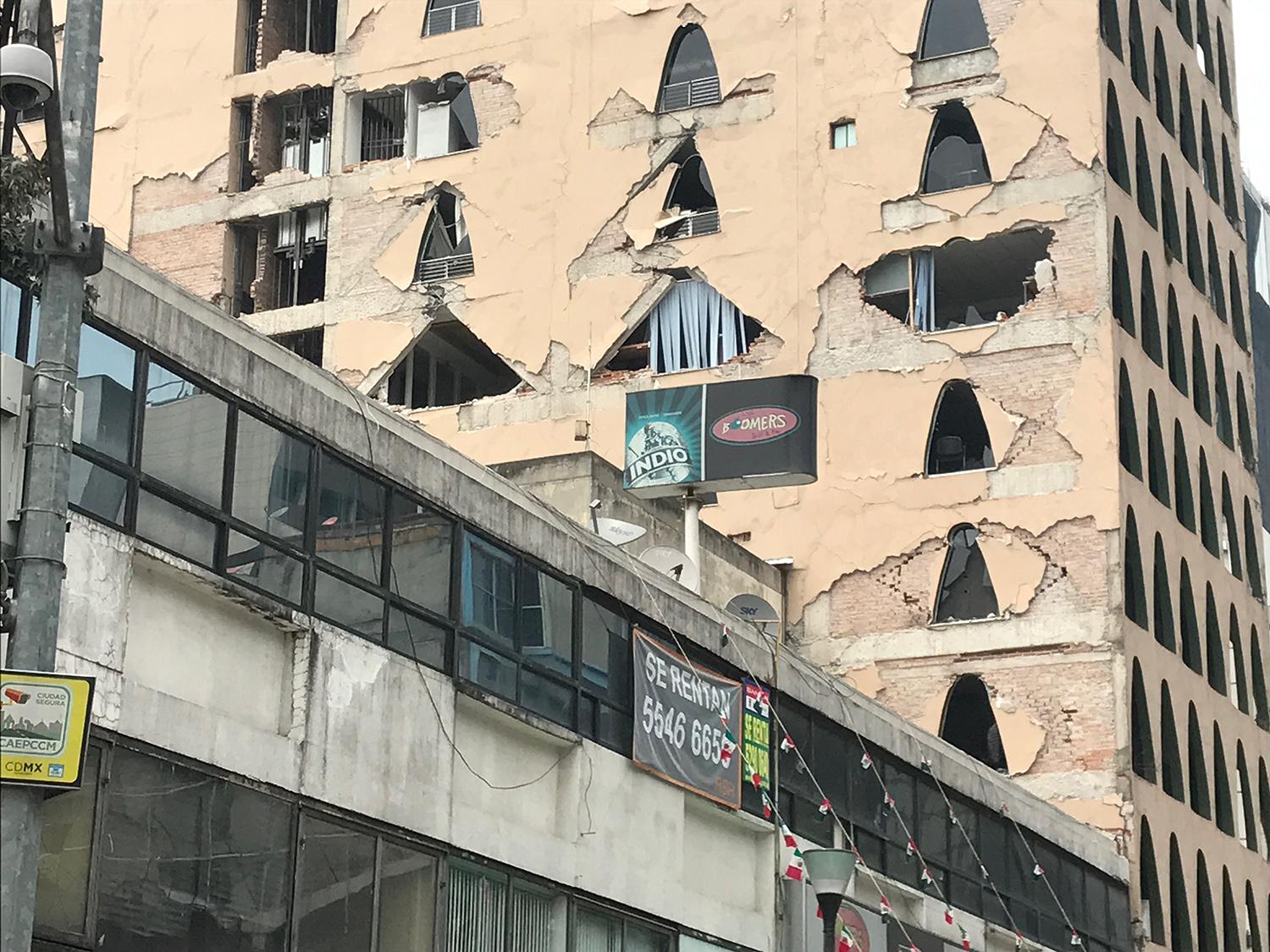
Alberto López, the director of local engineering consulting firm APL Consultores, estimates that the earthquake damaged 3,000 buildings in Mexico City.
The damage level varies drastically from building to building, going from broken windows to badly cracked pillars that make the structures uninhabitable.
López’s team of 15 engineers has been doing free inspections around the city since the quake. So far, they have visited more than 250 buildings after residents sent them WhatsApp messages with photos of damage; their assessments have led to 15 building evacuations.
“Those buildings will be demolished in a controlled manner,” López explained. “The important thing for us is to not repeat what happened in the 1985 earthquake” — Mexico’s deadliest on record — when people returned to their homes and died when buildings fell during an aftershock.
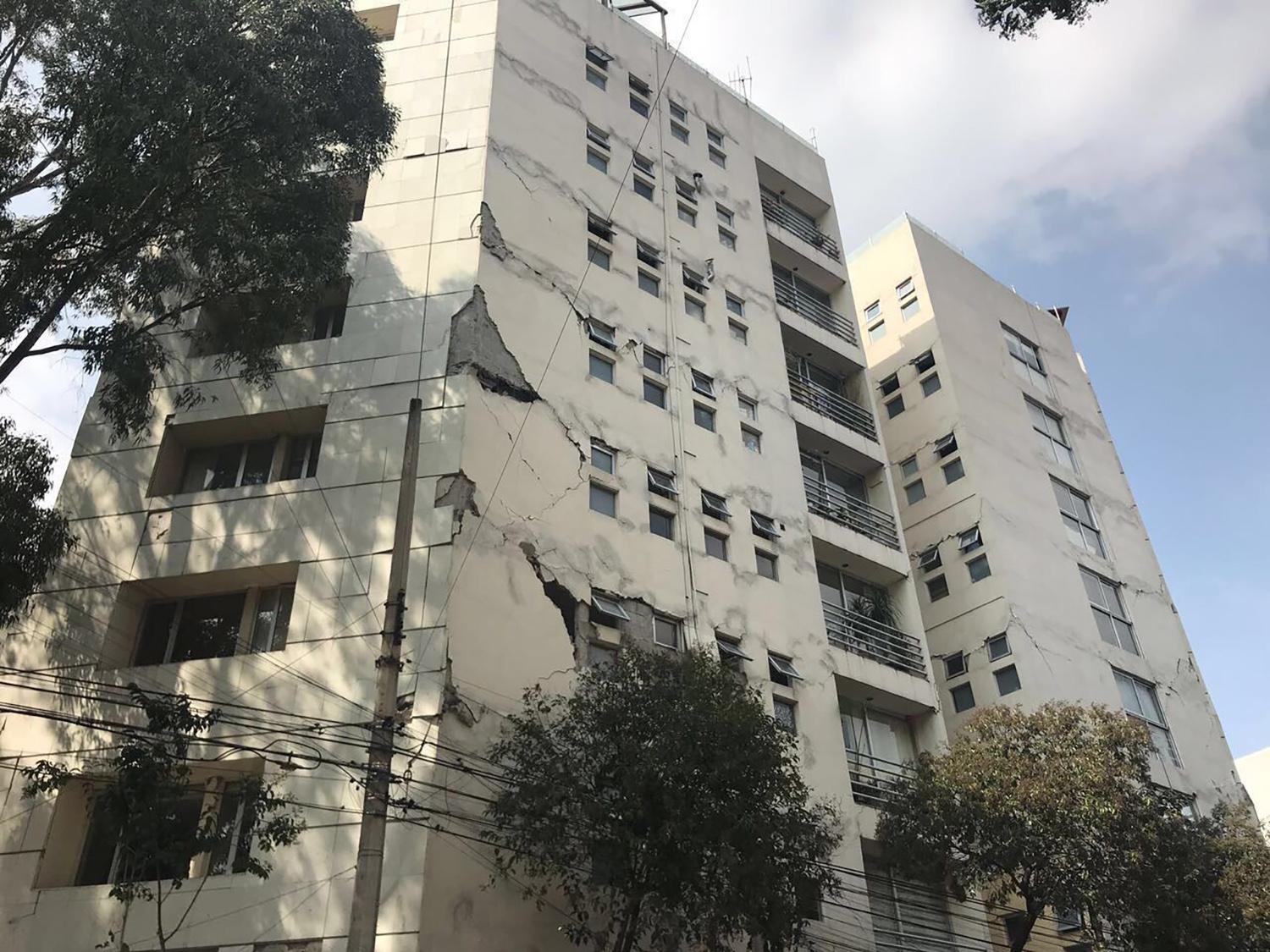
She said chunks of cement tiles fell off her building’s façade during the quake, but volunteer inspectors have told her and her neighbors that there is no structural damage.
Miranda and her neighbors nevertheless decided to evacuate their building until they get official word that it’s safe to live in. In the meantime, they have been sitting outside in shifts, to stop looters from getting into the apartments.
“We’ve had suspicious people dressed as volunteer workers, trying to get in the building, claiming that they want to help us get our things out,” Miranda said.
Miranda wants life to get back to normal as soon as possible, and for her building to be functional once again. “It is a bit scary to go back,” she said. “But at this point, I also just want to be home.”
The story you just read is accessible and free to all because thousands of listeners and readers contribute to our nonprofit newsroom. We go deep to bring you the human-centered international reporting that you know you can trust. To do this work and to do it well, we rely on the support of our listeners. If you appreciated our coverage this year, if there was a story that made you pause or a song that moved you, would you consider making a gift to sustain our work through 2024 and beyond?
